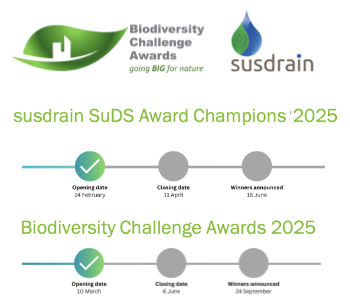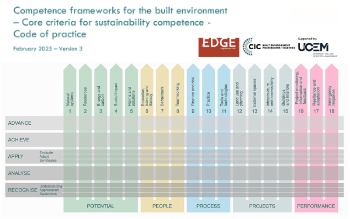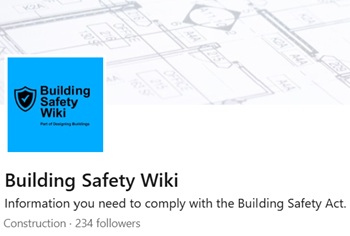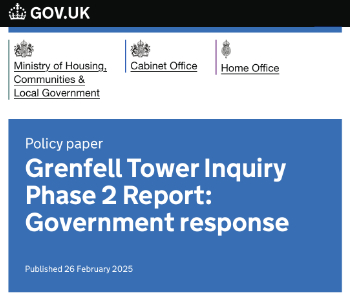Landings in buildings
Landings are level platforms found at the top or bottom of flights of stairs. Intermediate landings may be found part way up flights of stairs where there is an intermediate level, where there is a change in direction of the flight of stairs, or where there is a long flight of stairs.
Approved document K protection from falling, collision and impact, requires that there is a landing at the top and bottom of every flight, with a width and length at least as great as the smallest width of the flight of stairs.
Landings should be clear of permanent obstructions. They may have doors to cupboards or ducts that open over them, but these should remain closed in normal use. Other doors may swing across landings in dwellings, but only as shown below.
A headroom of at least 2m should be provided on all landings.
Where there are more than 36 risers in consecutive flights of stairs, Approved Document K requires that there is at least one change of direction, with a landing that has a minimum length equal to the width of the stairs. Landings in building other than dwellings should be at least 1200mm long.
For buildings other than dwellings, the maximum number of risers should be 16 for utility stairs, and 12 for general access stairs (or 16 in exceptional circumstances where the plan area is restricted). Landings in buildings other than dwellings should have suitable handrails on each side.
Landings may also be found at the top, bottom and along the length of ramps. They must be at least as long as the width of the ramp. For buildings other than dwellings, they must be at least 1200mm long at the top and bottom of the ramp, and at least 1500mm long for intermediate landings.
Approved Document M sets out additional guidance and requires the provision of landings as rest areas for wheelchair users and people with walking difficulties, and to provide space for wheelchair users to stop and open doors.
Approved Document M also refers to landings in front of lifts.
Approved Document B sets our additional requirements in relation to fire safety.
NB see also: Soft landings.
[edit] Related articles on Designing Buildings Wiki
- Ancillary area.
- Approved Document B.
- Approved Document K.
- Approved Document M.
- Banister.
- Building regulations.
- Escalator.
- Finial.
- Flight.
- Guarding.
- Intermediate landing.
- Lifts.
- Lobby.
- Maximum length of a flight of stairs.
- Newel post.
- Railings.
- Ramps.
- Spiral stairs and helical stairs.
- Stairs.
- Stairs going.
- Stairs nosing.
- Stairs riser.
- Stairs string.
- Stairs tread.
- Stairlift.
- Types of stairs.
- Wheelchair platform stairlifts.
Featured articles and news
Sustainable Urban Drainage and Biodiversity
Awards for champions of these interconnected fields now open.
Microcosm of biodiversity in balconies and containers
Minor design adaptations for considerable biodiversity benefit.
CIOB student competitive construction challenge Ireland
Inspiring a new wave of Irish construction professionals.
Challenges of the net zero transition in Scotland
Skills shortage and ageing workforce hampering Scottish transition to net zero.
Private rental sector, living standards and fuel poverty
Report from the NRH in partnership with Impact on Urban Health.
.Cold chain condensing units market update
Tracking the evolution of commercial refrigeration unit markets.
Attending a conservation training course, personal account
The benefits of further learning for professsionals.
Restoring Alexander Pope's grotto
The only surviving part of his villa in Twickenham.
International Women's Day 8 March, 2025
Accelerating Action for For ALL Women and Girls: Rights. Equality. Empowerment.
Lack of construction careers advice threatens housing targets
CIOB warning on Government plans to accelerate housebuilding and development.
Shelter from the storm in Ukraine
Ukraine’s architects paving the path to recovery.
BSRIA market intelligence division key appointment
Lisa Wiltshire to lead rapidly growing Market Intelligence division.
A blueprint for construction’s sustainability efforts
Practical steps to achieve the United Nations Sustainable Development Goals.
Timber in Construction Roadmap
Ambitious plans from the Government to increase the use of timber in construction.
ECA digital series unveils road to net-zero.
Retrofit and Decarbonisation framework N9 launched
Aligned with LHCPG social value strategy and the Gold Standard.
Competence framework for sustainability
In the built environment launched by CIC and the Edge.
Institute of Roofing members welcomed into CIOB
IoR members transition to CIOB membership based on individual expertise and qualifications.
Join the Building Safety Linkedin group to stay up-to-date and join the debate.
Government responds to the final Grenfell Inquiry report
A with a brief summary with reactions to their response.



























